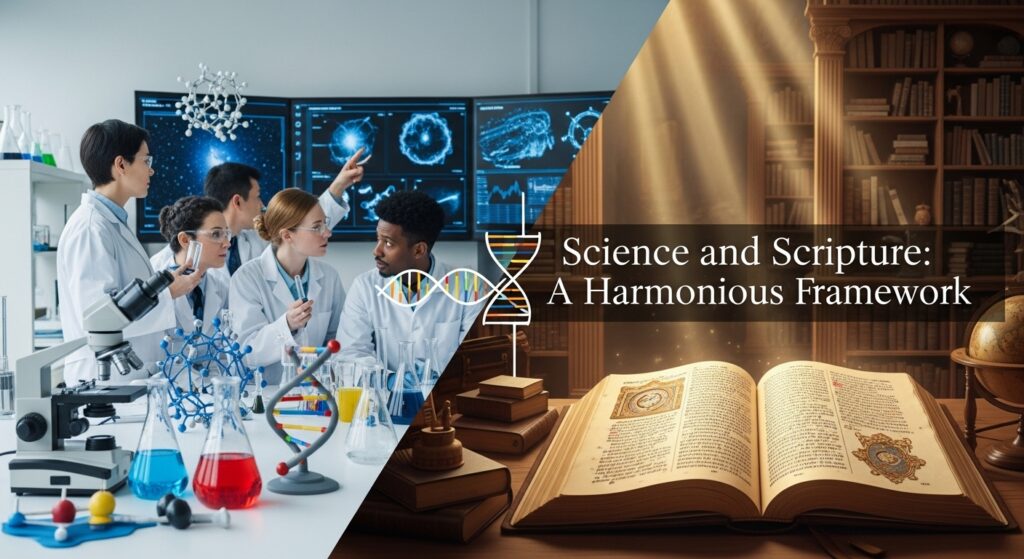The question of how to interpret the creation account in Genesis 1 has sparked countless discussions and debates among Christians and skeptics alike. Many struggle to reconcile the biblical text with modern scientific theories about the universe’s age and the origins of life. As a Christian who firmly believes that the Bible speaks clear, authoritative truth—readily understandable when viewed from God’s perspective rather than our limited human lens—my aim is to clarify these issues. By grounding our understanding in the authority of Scripture, we can address common objections with theological precision and charity. Let’s explore the biblical text, its implications, and how it responds to the challenges posed by contemporary science.
The Meaning of “Day” in Genesis 1
One of the most debated aspects of Genesis 1 is the meaning of the word “day” (Hebrew: יֹום yom). Some suggest that the “days” of creation could represent long epochs or ages, citing passages like Psalm 90:4 and 2 Peter 3:8: “With the Lord a day is like a thousand years, and a thousand years are like a day.” At first glance, this might seem to support the idea that the creation “days” could be extended periods. However, a closer look at the context of these verses reveals a different focus.
The Patience of God
Both Psalm 90 and 2 Peter 3 emphasize God’s patience and His transcendence over time, not the duration of the creation week. Peter’s point is clear: “The Lord is not slow in keeping His promise, as some understand slowness” (2 Pet. 3:9). He is addressing God’s timing in fulfilling His promises, not redefining the word “day” in Genesis. If we use this verse to argue that “day” in Genesis 1 means “epoch,” we must also allow it to mean that “a thousand years” could be a single day in Peter’s context, which would undermine his argument. The text is highlighting the difference between the Creator’s eternal perspective and human limitations, not providing a hermeneutical key to reinterpret Genesis.
What is a Day?
So, what kind of “day” does Genesis 1 describe? The text itself provides clear clues. Each creation day is marked by the phrase “evening and morning” followed by a number (e.g., “the first day,” Gen. 1:5). This same structure appears in Exodus 20:8-11, where the Sabbath commandment is grounded in God’s creation week: “For in six days the LORD made heaven and earth, the sea, and all that is in them, and rested on the seventh day.” The Israelites were instructed to work for six literal days and rest on the seventh, mirroring God’s pattern. They were not told to work for six epochs and rest for one. The plain reading of Genesis 1, consistent with its use elsewhere in Scripture, points to 24-hour days.
The “Pre-Sun Light” Objection
A common objection to a literal reading of Genesis 1 is the presence of light on the first day (Gen. 1:3) before the creation of the sun, moon, and stars on the fourth day (Gen. 1:14-19). Critics argue that this order is scientifically problematic, as light in our experience typically comes from a physical source like the sun. However, this objection assumes naturalism—the belief that all phenomena must be explained by natural processes alone.
The Happy Believer
For the theist, this is no issue. Scripture consistently presents God as the source of light, independent of created objects. In John 1:4-5, Jesus is described as “the light of men,” shining before the physical sun was created. In Revelation 21:23, the New Jerusalem is illuminated not by the sun but by the glory of God and the Lamb. Genesis 1’s sequence—light before the sun—serves as a polemic against the sun-worshipping cultures surrounding ancient Israel. It declares that the Creator is sovereign over light and does not depend on the sun to produce it. Far from being a problem, this order underscores God’s transcendence and creative power.
Appearance of Age or Functional Maturity?
Another point of contention is the idea that the universe might “appear old” when measured by scientific methods like radiometric dating, tree rings, or ice layers. Some argue that God created the world with an “appearance of age,” which could be seen as deceptive. A better way to frame this is functional maturity. When God created Adam, He made him as a fully grown adult, not an infant. Trees bore fruit, grapes were ready to ferment, and starlight reached Earth from the moment of creation. This isn’t deception; it’s a universe designed to be immediately functional.
The New Born
Consider a newborn baby delivered at 10 a.m. A doctor doesn’t expect the parents to wait 20 years to have a conversation with their child. Similarly, God’s creation was ready for use from the start. The question isn’t whether the universe “looks old” but whether God’s Word indicates He used long ages to create it. Genesis 1 suggests He did not. Scientific measurements of secondary processes—like radioactive decay or tree growth—tell us how the universe might have developed if God had used only those processes. They don’t dictate the actual time or method of creation, which God accomplished by His direct word (Gen. 1:3, 6, 9, etc.).

Science and Scripture: A Harmonious Framework
The tension between science and Scripture often stems from a misunderstanding of their relationship. Christian science is not “science minus evidence” but science within a worldview that acknowledges miracle, providence, and divine revelation. In contrast, uniformitarian geology (which assumes constant geological processes over vast ages) and Darwinian biology (which explains life through unguided natural selection) begin with the axiom that miracles are impossible. The debate, then, is not between evidence and faith but between competing worldviews: which set of axioms best accounts for all the evidence, including the testimony of Scripture?
Genesis 1
Genesis 1 is God’s eyewitness account of creation. As Christians, we are called to let this divine revelation set the boundary conditions for interpreting the natural world. This doesn’t mean rejecting scientific inquiry—far from it. It means approaching the data with humility, recognizing that our models are fallible and that anomalies in conventional theories (like the need for constant adjustments to cosmological or biological models) may point to a need for a different starting point.
An Invitation to Trust God’s Word
The creation account in Genesis 1 is not a scientific textbook, but it is a theological foundation. It declares that God is the sovereign Creator, unbound by the limitations of His creation. It invites us to trust His Word as the ultimate authority, even when human theories challenge it. By starting with Scripture, we can engage the world scientifically without compromising the truth of God’s revelation.
I invite you to consider Genesis 1 not as a puzzle to be solved but as a testimony to be believed. Let it shape your understanding of the Creator and His work. When we do, the rest of the data—scientific, historical, and theological—begins to align in ways that glorify the One who spoke the universe into being.

